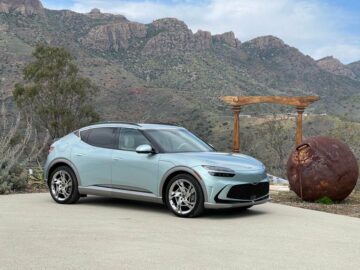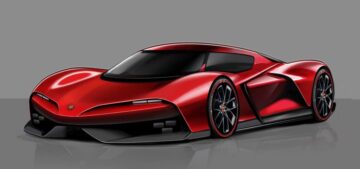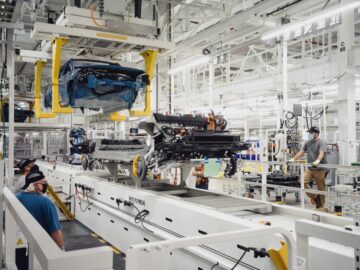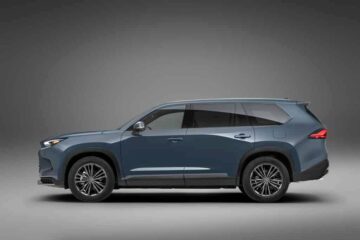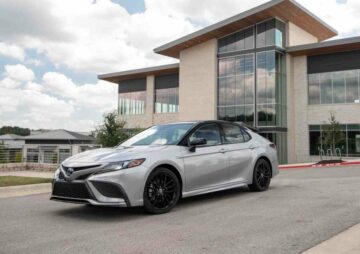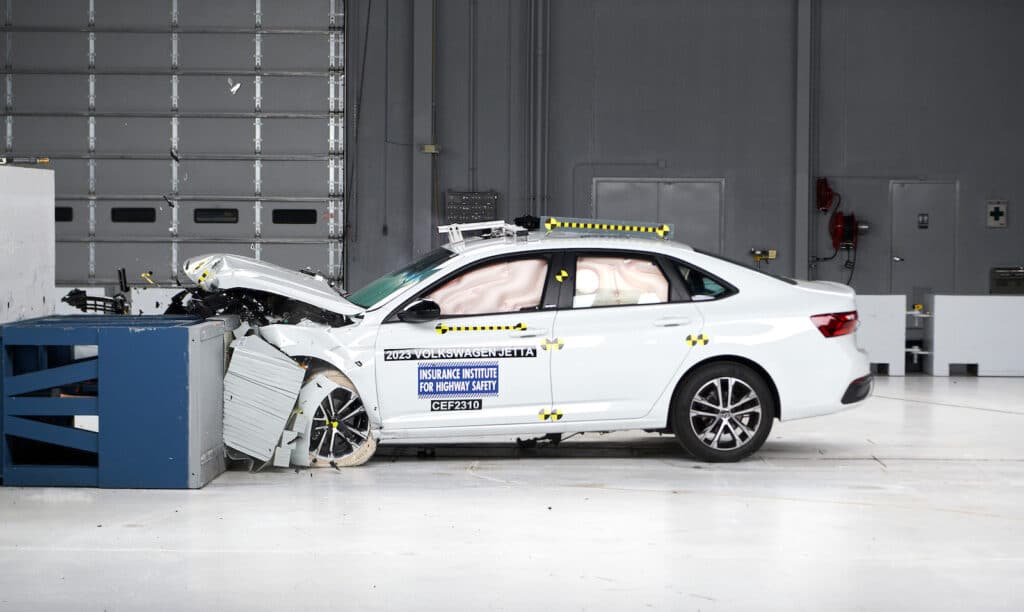
If you think that driving a new midsize sedan will keep you safe in an accident, new crash test results from the Insurance Institute for Highway Safety (or IIHS) reveal otherwise.
None earned a Top Safety Pick Plus rating, the IIHS’s top safety award, the Honda Accord outperformed other midsize cars in the test, which included the Subaru Outback, Nissan Altima, Toyota Camry. Hyundai Sonata, Kia K5 and Volkswagen Jetta.
Of the sedans tested, only the Honda Accord garnered a good rating, while the Subaru Outback earns an acceptable rating.
The Nissan Altima and Toyota Camry are assessed as marginal. The Hyundai Sonata, Kia K5 and Volkswagen Jetta are ranked as poor.
A change in testing

The findings come after years of research revealed that the risk of a fatal injury is now higher for belted occupants in the rear than for those in the front due to improved airbags and advanced seat belts that are rarely available in back.
The new findings led the IIHS to update its moderate overlap front crash test, adding a dummy in the back seat around the size of a 12-year-old kid or a petite woman behind an adult male driver dummy, with injuries suffered by backseat passengers are the focus of the new measurements that IIHS researchers employ.
“In most of the midsize cars we tested, the rear dummy slid forward or ‘submarined’ beneath the lap belt, causing it to ride up from the pelvis onto the abdomen and increasing the risk of internal injuries,” said IIHS President David Harkey. “In the three poor-rated vehicles, measurements taken from the rear dummy also indicated likely injuries to the head or neck as well as to the chest.”
To earn a Good rating, there can’t be injury to the second-row dummy’s head, neck, chest or thigh. The dummy should not submerge during the collision and remain in the proper seating position. The shoulder belt should stay on the shoulder, and its position during the crash is checked using a pressure sensor on the torso of the rear dummy. Finally, the head should be a safe distance from the front seatback and the rest of the car’s interior components.

What hasn’t changed
But otherwise, the crash tests remain unchanged. Measurements gathered from the driver dummy should not indicate an excessive risk of injuries, and the structure of the occupant compartment must maintain survival space for the driver.
This is why for those up front, all seven midsize sedans provide good protection. But the IIHS did note that the Honda Accord driver has a slightly higher risk of injuries to the right leg or foot, with the car ranked as Acceptable for leg and foot injuries. For those in the Honda Accord’s back seat, there’s no increased threat of injury, with the rear restraints controlling the dummy’s motion. All other test areas were rated Good.
Other crash test details

The Subaru Outback, which was ranked by the IIHS as Acceptable, there was no indication that riders in the rear were at a greater risk of being injured. But the dummy did submarine beneath the lap belt, and its head came close to hitting the front seatback during the crash test.
After the crash, the dummy’s head slid between the side curtain airbag, hitting the side window door trim while the dummy’s body rebounded. This led to the Outback being rated as Poor for the rear passenger restraint and kinetics test. All other tested areas were rated Good.
The Nissan Altima also ranked Poor for the rear passenger restraint and kinetics test, with the rear dummy sliding beneath the lap belt, and the shoulder belt moving off the shoulder towards its neck. In addition, there was a risk of head or neck injuries according to measurements taken during the test. Chest protection was rated Marginal, while head and neck protection were deemed Acceptable.
It was similar news for the Toyota Camry, where chest protection was rated Marginal. Like the Nissan Altima, rear seat riders would slide beneath the lap belt, with the shoulder belt moving off the shoulder towards its neck. In addition, it was ranked as Poor for the rear passenger restraint and kinetics test.

Being that both the Hyundai and Sonata and Kia K5 are genetic siblings, and are both produced by Hyundai Motor Group, it’s little surprise that they delivered similar crash test results.
As it was with the Nissan Altima and Toyota Camry, rear seat dummies slipped beneath the rear seat lap belt, which failed to hold it in the proper position. Measurements from the dummy signified likely head or neck and chest injuries, and excessive belt forces, even as the rear shoulder belt moved from the shoulder towards the neck. This garnered a rear passenger restraint and kinetics test rating of Poor. The South Korean pair also rated Poor in head, neck and chest protection. All other measurements were ranked as Good.
Then there was the Volkswagen Jetta, where rear seat passengers also submarined beneath the safety belt as did most other midsize sedans rated here. Measurements suggested likely injuries to the head or neck and chest as well as excessive belt forces. And unlike the others, the rear passenger’s head came too close to the front seatback, earing the car a Poor rating for the possibility of head, neck and injury. But unlike the all but the Honda Accord, the Volkswagen Jetta earned a rear passenger restraint and kinetics test rating of Acceptable, although the IIHS neglected to say why it earned the higher rating versus the others.
Despite the grim ratings, the IIHS says that the test results are not the result of the back seat becoming less safe. In fact, the IIHS still recommends that children ride the rear seat, as the back seat remains the safest place for them, as they can still be injured by an inflating front airbag if seated up front.
- SEO Powered Content & PR Distribution. Get Amplified Today.
- PlatoData.Network Vertical Generative Ai. Empower Yourself. Access Here.
- PlatoAiStream. Web3 Intelligence. Knowledge Amplified. Access Here.
- PlatoESG. Automotive / EVs, Carbon, CleanTech, Energy, Environment, Solar, Waste Management. Access Here.
- PlatoHealth. Biotech and Clinical Trials Intelligence. Access Here.
- ChartPrime. Elevate your Trading Game with ChartPrime. Access Here.
- BlockOffsets. Modernizing Environmental Offset Ownership. Access Here.
- Source: https://www.thedetroitbureau.com/2023/08/rear-seat-injuries-likely-in-midsize-sedans/
- :has
- :is
- :not
- :where
- $UP
- 2023
- a
- acceptable
- accident
- accord
- According
- adding
- addition
- Adult
- advanced
- After
- All
- also
- Although
- an
- and
- ARE
- areas
- around
- AS
- assessed
- At
- available
- award
- back
- BE
- becoming
- behind
- being
- between
- body
- both
- Bureau
- but
- by
- came
- CAN
- car
- cars
- causing
- change
- checked
- Children
- Close
- come
- components
- controlling
- Crash
- David
- deemed
- delivered
- DID
- distance
- Door
- driver
- driving
- due
- during
- earn
- earned
- emerge
- Even
- fact
- Failed
- Finally
- findings
- Focus
- Foot
- For
- Forces
- Forward
- from
- front
- gathered
- glass
- good
- greater
- grim
- Group
- head
- here
- higher
- Highway
- highway safety
- hitting
- hold
- HTTPS
- Hyundai
- if
- improved
- in
- included
- increased
- increasing
- indicate
- indicated
- indication
- inflating
- Institute
- insurance
- interior
- internal
- IT
- ITS
- jpg
- Keep
- Kia
- Kid
- Korean
- Led
- less
- like
- likely
- little
- maintain
- MAKES
- max-width
- meaning
- measurements
- mention
- moderate
- most
- motion
- Motor
- moved
- moving
- must
- New
- news
- Nissan
- no
- note
- now
- of
- off
- on
- only
- onto
- or
- Other
- Others
- otherwise
- pair
- performed
- pick
- Place
- plato
- Plato Data Intelligence
- PlatoData
- plus
- poor
- position
- possibility
- president
- pressure
- Produced
- proper
- protection
- provide
- ranked
- Ranking
- rarely
- rated
- rating
- ratings
- recommends
- remain
- remains
- research
- researchers
- REST
- result
- Results
- reveal
- Revealed
- Ride
- riders
- right
- Risk
- safe
- safest
- Safety
- Said
- say
- says
- sedans
- seven
- should
- shown
- side
- similar
- Similarly
- SIX
- Size
- Slide
- sliding
- South
- south korean
- Space
- stay
- Still
- structure
- suffered
- surprise
- survival
- taken
- test
- tested
- tests
- than
- that
- The
- Them
- There.
- they
- Think
- this
- those
- threat
- three
- to
- too
- top
- towards
- toyota
- undergoing
- unlike
- Update
- using
- Vehicles
- Versus
- volkswagen
- was
- we
- WELL
- were
- which
- while
- why
- will
- window
- with
- woman
- would
- years
- you
- zephyrnet


